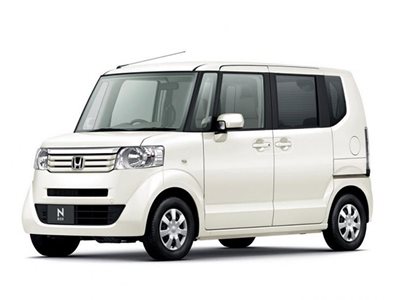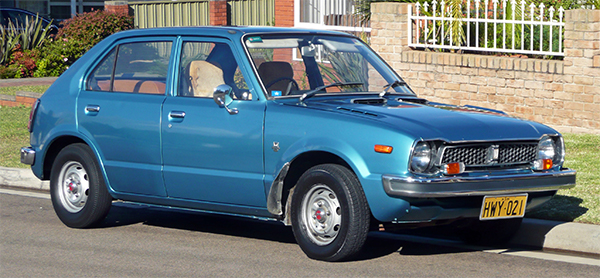From electronic brooms straight out of Harry Potter to solar-powered ‘sashimi cars’ – the weird and wonderful world of the Tokyo Motor Show is back.
Over the last few days, a million or so people have poured through the doors of Tokyo’s Big Sight arena to delight in flying cars, drone races and crazy concept vehicles — most of which will never see the light of day.

The Toyota e-broom
But there’s another, subtler trend at this year’s show that grabbed my attention: the way Japanese auto makers are tackling the electric vehicle (EV) revolution — not with massive, long-range batteries but with ultra-compact ‘kei cars’, with short ranges and low speeds.
And this has important implications for western automotive tech firms with the right products to bring to the party.
What kind of cars are we talking about?
If I asked you to name Japan’s top-selling car off the top of your head, you might well say something like the Toyota Prius. In fact, the accolade goes to a kei car called the N-Box, of which Honda sold a whopping 242,000 in 2018 – more than double Toyota’s Prius sales.
In case you haven’t seen one, ‘N-Box’ is a rather appropriate name for a kei car. Short, squat and often literally box-shaped, kei cars are a vehicle category that’s unique to Japan — no more than 3.4m in length and 1.48m in width, with a maximum power of only 63 brake horsepower.

The Honda N-Box
Given the way they look, it's no surprise they've also often had rather bonkers names - including the Honda That's, the Mitsubishi Mini Active Urban Sandal and the Honda Life Dunk.
There’s also my personal favourite: the Daihatsu Naked.
Why so small?
The kei car was first introduced in Japan following the Second World War. Back then, the government promoted them with tax breaks as a way of boosting productivity using cheap, reliable vehicles, at a time when most people in Japan couldn’t afford a regular car.
The tax breaks have now largely disappeared, but kei cars remain relevant because of their compact size. They’re perfect for navigating the increasingly crowded streets and tiny parking spaces of Tokyo and other urban areas – a trend Japanese manufacturers are banking on seeing globally for the success of their new compact EVs.
Driving innovation
In addition to their practicality, one of the reasons Japanese kei cars are of such significance to the automotive industry is because of the technological challenges – and hence business opportunities — building such tiny cars presents.
How do you make something comfortable, powerful enough to move the whole family and safe to drive when it has to fit into such a small package?
Solving these problems has forced Japanese companies and their partners to innovate. And this, in turn, has enabled them to transfer these innovations into larger cars and grow into some of the most successful automotive companies in the world.
We have a good historical example in the Honda Civic, which would have seemed tiny at just 3.35m when it launched in America in 1973. But its superior fuel efficiency – using tech Honda developed to enable its other vehicles to meet kei car regulations – helped the car get a strong foothold thanks to an oil crisis that hit later that year.

The Honda Civic (First Generation)
And, as we look to the future, kei cars serve as the ideal platform for Japanese manufacturers to experiment with electrification. The Mitsubishi i-MiEV, a kei car launched in 2009, was the world’s first mass-produced electric car. Ten years on, we see the trend coming to a head at this year’s Motor Show.
Toyota’s headline announcement at the show was its ‘ultra-compact BEV’ – a two-seat electric vehicle that’s only 2.49 metres long, with a range of just 100 kilometres.
And Honda recently launched its unimaginatively-named Honda e – a compact, electric 4-seater that it hopes will make waves in the industry.

From left to right: Toyota's ultra-compact BEV, Suzuki's Waku Spo compact EV concept, the Honda e, and the Nissan IMk compact EV concept
What does all this mean for western firms?
For western automotive companies looking to expand into Japan, the sheer oddness of the kei car can reinforce the perception that Japan is an impenetrable market full of weird, box-shaped vehicles and dominated by local players.
But, in reality, the innovations that these vehicles demand make Japan an attractive market for any company in the automotive space. If you make lightweight materials or efficient battery technology, for example, successfully targeting Japan’s compact EV market could see your products integrated into hundreds of thousands of global models a few years down the line.
With roads getting busier and cities denser worldwide, the demand for ‘alternative mobility’ solutions is ever-increasing. Japan’s expertise in ‘shrinking innovation’ means it will certainly be at the forefront of any new developments. And, if you target Japanese manufacturers in an effective way, you may well have a good chance to be part of that.